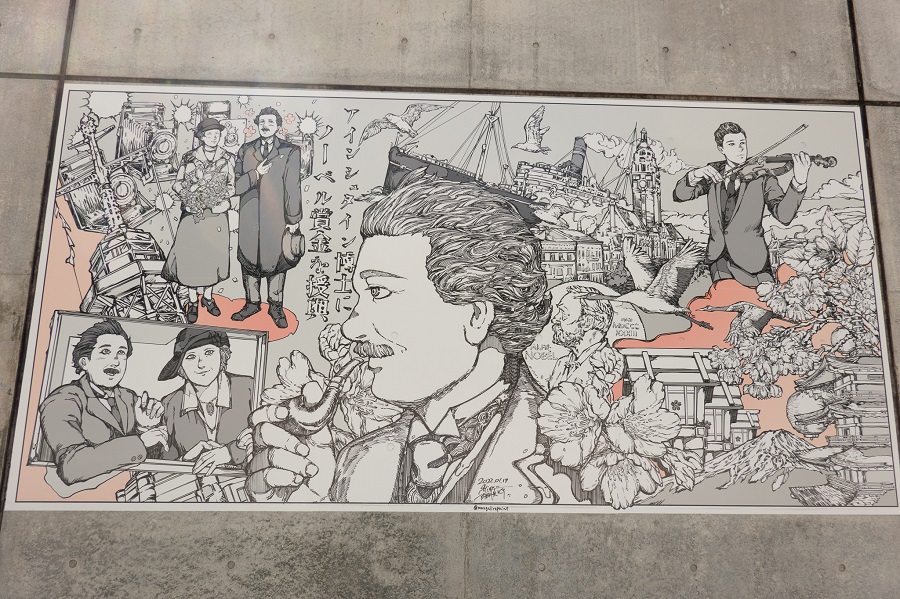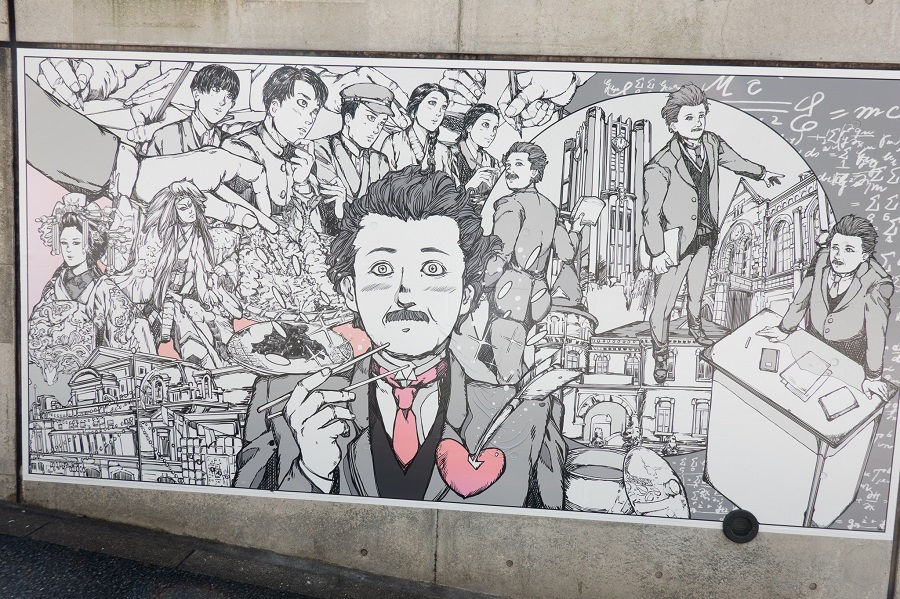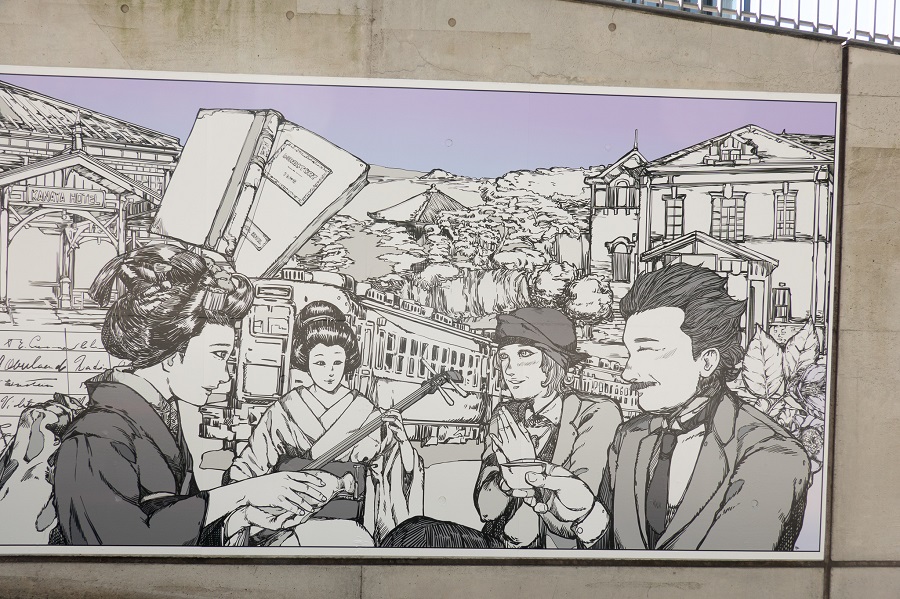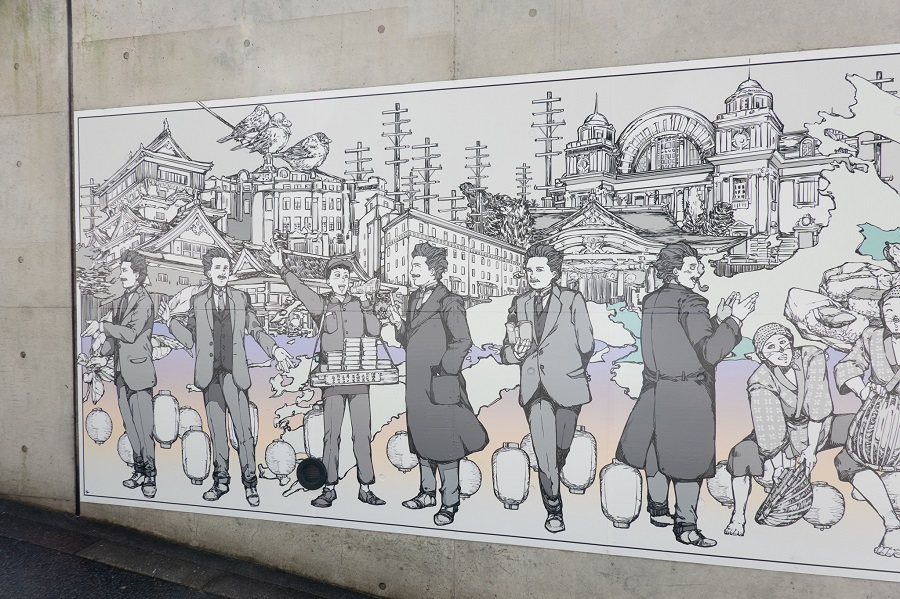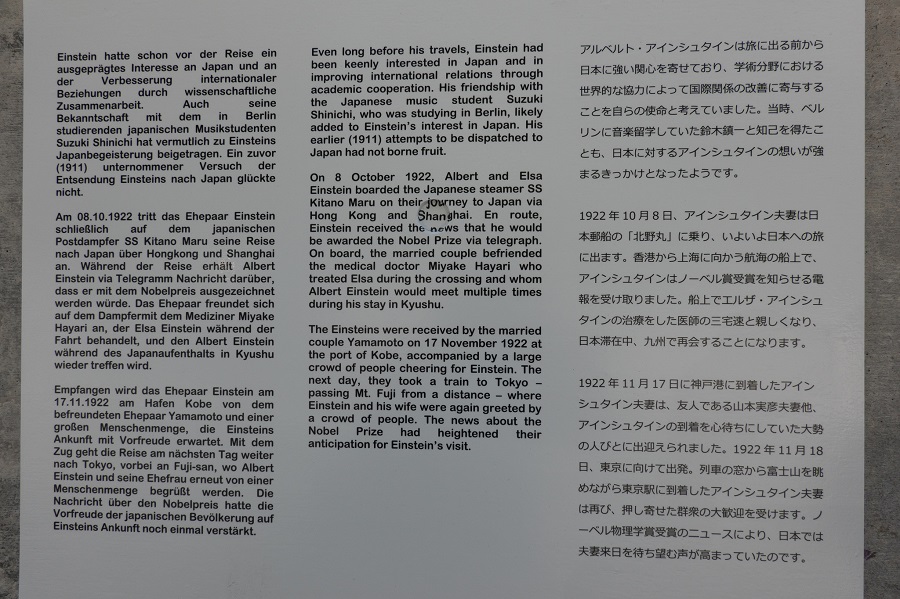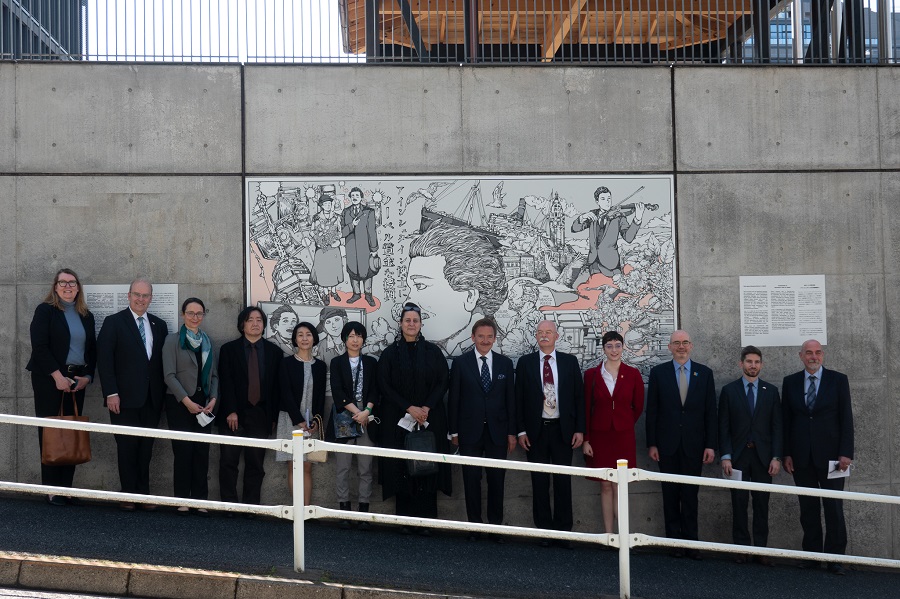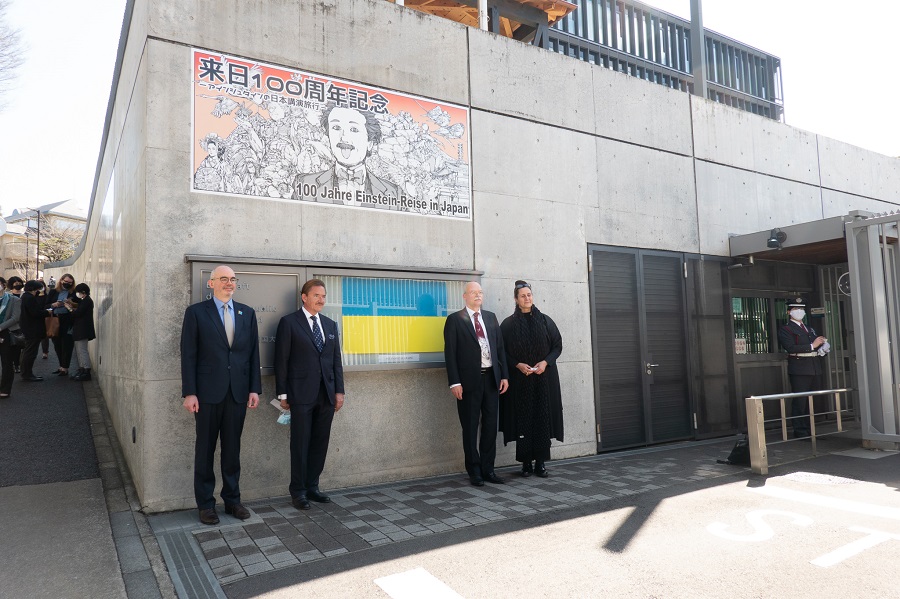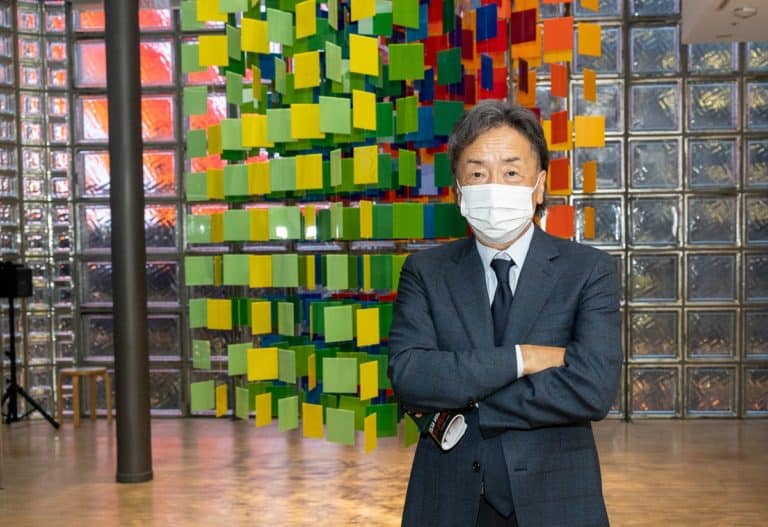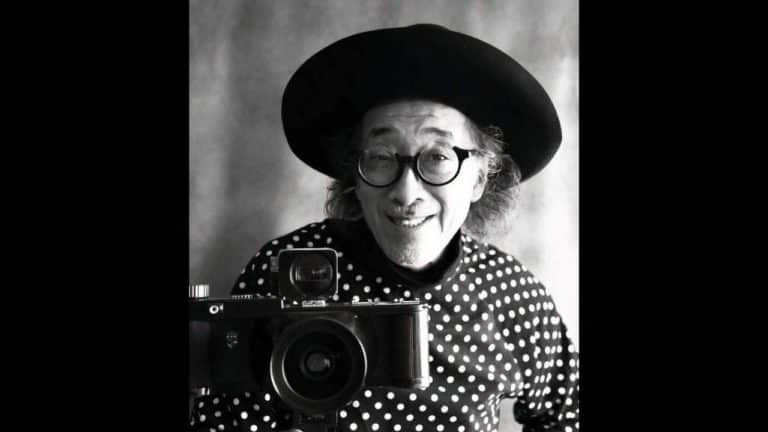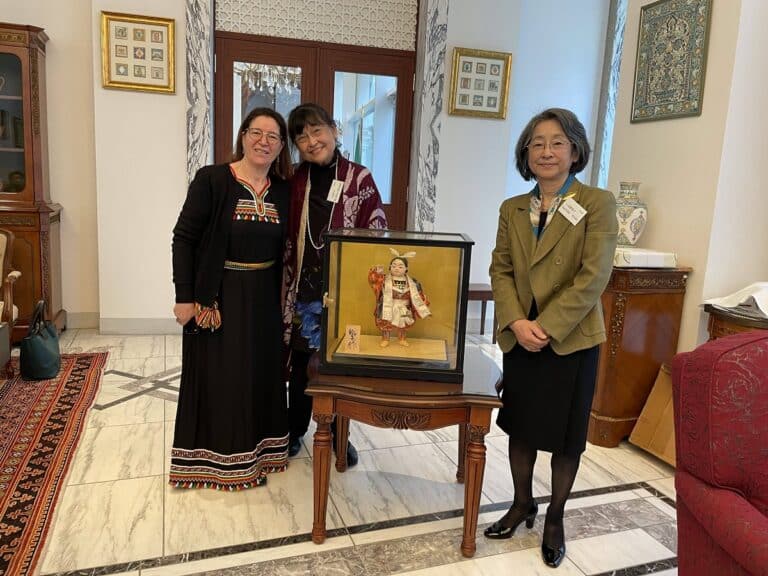100th Anniversary of Einstein’s Arrival in Japan
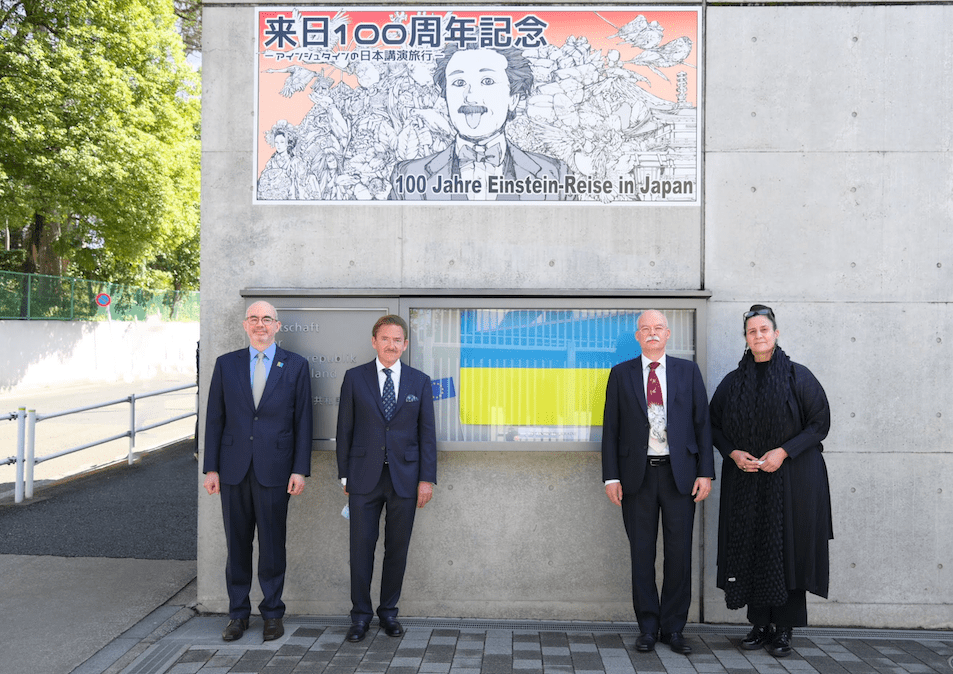
This year marks the centennial of Albert Einstein’s visit to Japan in 1922, when NYK’s Kitano Maru, on which Albert Einstein was aboard, entered Kobe Port. After a long journey of about a month, Einstein finally came to Japan. Einstein would stay in this small oriental country for more than 40 days and visit various places. He had been on a voyage for over a month since he left Marseille, France. Regarding the scenery of the Seto Inland Sea, Einstein wrote: “Gentle and elegant people and art. The Japanese are more mysterious than I knew in Lafcadio Hearn’s book, and they are also compassionate and unpretentious.”
At the German Embassy in Japan (H.E. Dr. Clemens von Goetze), based on Einstein’s travel diary of Japan, an image of Einstein and the mysterious country sceneries were drawn with Shinnosuke Uchida, a cartoon live painter, on the outer wall of the German Embassy in a cartoon Manga.
On March 14, 2022, the mural was officially disclosed by Ambassador Clemens von Goeze to coincide with Einstein’s birthday. While Einstein was German-born, he also had strong connections with the United States of America, Switzerland and Israel: he studied and lived in Switzerland for many years and did not return to Germany from a travel to the United States in 1933 after the Nazis took power in Germany. The German Embassy in Japan invited the ambassadors and diplomats of Switzerland, the United States, and Israel, who had a deep connection with him, to appreciate the wall art that decorates the outer wall of the embassy, and once again praised Einstein’s achievements.
Comments from countries related to Einstein are as follows:

Ambassador of the Federal Republic of Germany, Dr. Clemens von Goetze:
Albert Einstein made pivotal contributions not only to the field of theoretical physics; he also promoted intercultural understanding and peace. While the 1922 travels remained Einstein’s only visit to Japan, his detailed records are testimony of the deep impressions which the Japanese society and culture left on him.
Deputy Chief of Mission of the United States of America, Raymond Greene:
In the southwest corner of the grounds of the National Academy of Science in Washington, DC, between the Lincoln Memorial and the White House, is a large bronze figure of Albert Einstein that was unveiled in 1979, in honor of the centennial of his birth. The figure is holding a paper of mathematical equations summarizing Einstein’s three most important scientific contributions and sits above a map of the stars. The memorial is open to the bright sky, standing in contrast to the darkness overcoming Europe. In a city full of monuments and memorials, this quiet and peaceful one stands out for its humbleness – much like the man himself. On the bench where the figure is seated reads this quote from Einstein, a favorite: “As long as I have any choice in the matter, I shall live only in a country where civil liberty, tolerance, and equality of all citizens before the law prevail.”
Einstein’s contributions to science, international cooperation, and education, represented in murals and statues, will remain an inspiration to all of us.
Spokesperson and Director of Public Diplomacy of the Embassy of the State of Israel, Barak Shine:
Throughout Einstein’s life, he always stood by his Jewish values: the pursuit of social justice, education, and intellectual development. He used his fame to assist European Jews during the Holocaust, issuing affidavits until authorities stopped letting him. Einstein’s values are exemplified also by his actions of founding the Hebrew University of Jerusalem, which has greatly impacted modern Israel. By instilling his views within the educational system in Israel he significantly influenced the cultural importance to discover, develop, and innovate. Albert Einstein was not only a visionary for science and physics, he was also a social impact warrior. In Israel, we carry on his vision and legacy until today.
Ambassador of Switzerland, Dr. Andreas Baum:
Albert Einstein came to Switzerland to study in 1895, and gained his diploma in physics and mathematics, as well as his Swiss citizenship in 1901. After graduation, he moved to Bern where he published his ground-breaking annus mirabilis papers and began developing his theory of relativity. Later, he returned to Zurich, where he taught young talents from around the globe. Among them was theoretical physicist Jun Ishiwara, who later wrote in an essay that the great professor inquired much about the Orient from his Japanese student, clearly demonstrating strong interest not only in science but in human culture in a broader sense. His efforts to comprehend and embrace the international world, “without discrimination“ as the Japanese scientist described, continue to be an inspiration.
For More information visit: German Embassy in Japan
Read More:

